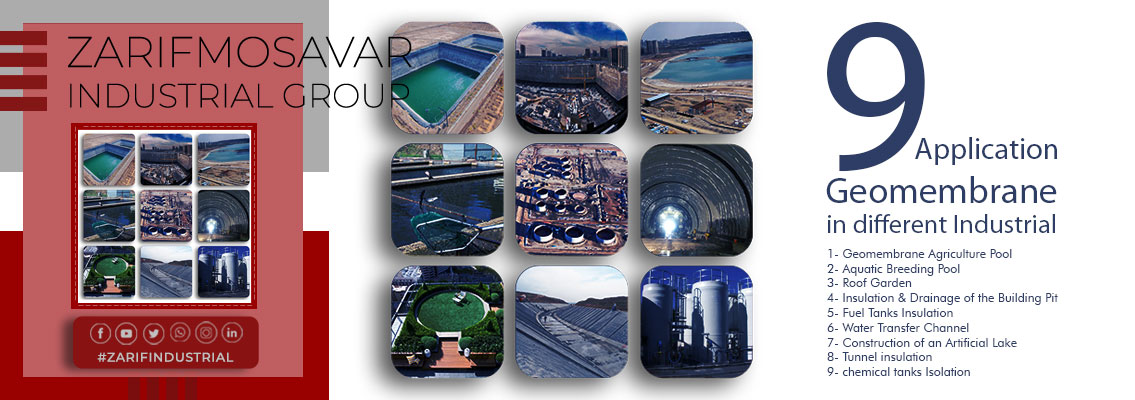applications of geomembranes ?
Geomembranes are actually the sheets of polymer that are resistant to ultraviolet light, chemicals and high and very low temperatures, and its flexibility has led to more applications of geomembranes in various industries.
9 important applications of geomembranes in different industries:
Due to the physical characteristics of geomembranes, the applications of geomembranes in various industries are increasing day by day, here we have tried to explain 9 importantapplications of geomembranes:
- Agricultural water storage pool
- Aquatic breeding pool
- Green roof
- Insulation and drainage of the building pit
- Insulation of fuel tanks
- Water transfer channel
- Construction of an artificial lake
- Tunnel insulation
- Isolation of sewage tanks and chemicals
1. Agricultural water storage pool
Due to the water shortage crisis, the importance of protection for water resources has increased day by day, and agriculture is no exception to this rule, which we have fully explained in several articles, which you can see through the following link.
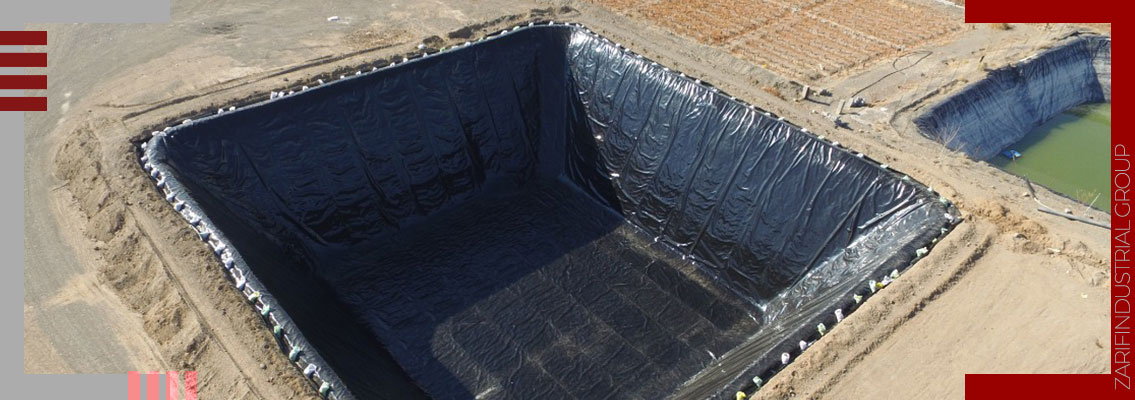
More : Why an agricultural pool with geomembrane sheets ?
2. Aquatic breeding pool
Due to the increasing consumption of protein and overfishing, or according to the high transferring duration the fish to distant cities, the need for reproduction and breeding of aquatic animals, especially fish, is felt in most cities of the country. Paddy is made and soil materials, concrete are used, but due to the speed of implementation, lack of space, lack of water and having a completely hygienic environment for aquatic life, the use of geomembrane pools is recommended. These ponds can also be used to grow algae.
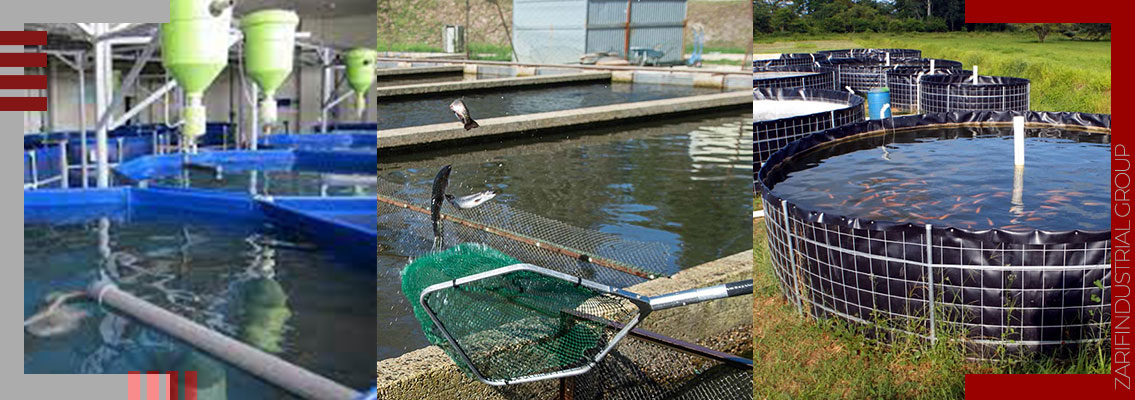
3. Green roof
With the increasing tendency of human to nature and the usage of modern technology and urbanization to gain a feeling of peace, comfort and security, and the need for green space and green roof to pass through polluted spaces and gain tranquility, is increasing day by day. Geosynthetic materials are used to create a completely insulated space without leakage and for the drainage system of the water outlet path on the roof.
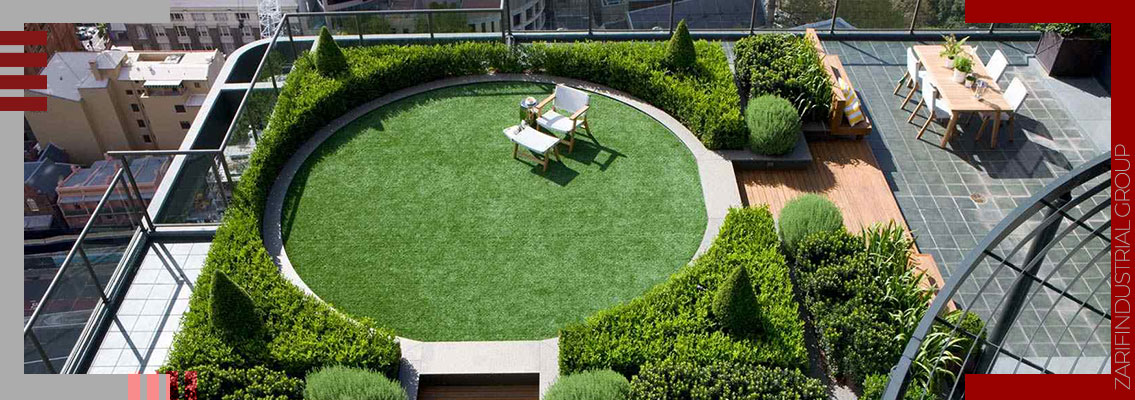
4. Insulation and drainage of the building pit
Due to the location of construction projects and the depth of excavation, we encounter water discharge from groundwater, which in the long run causes the destruction of the building foundation. Therefore, geosynthetic materials, geotextiles, geomembranes and GCL are used for insulation.
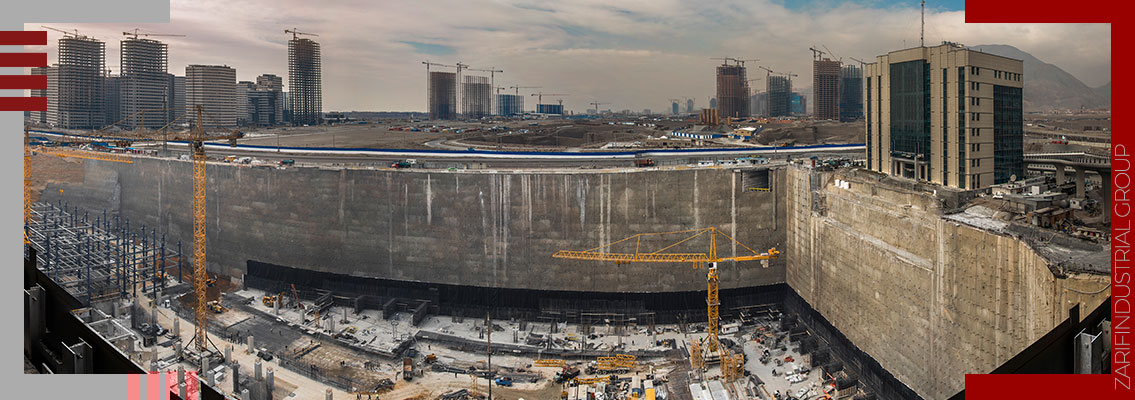
In this way, after excavating the surface and smoothing the soil surface and the edges of the reinforcement, first the geotextile layer is used to protect the geomembrane layer or the geocomposite layer is used, which is selected as the best option with the advice of experts.
5. Insulation of fuel tanks
Crude oil after extraction contains various items such as salt and chemical compounds (which is known as drilling effluent after separation) which, if not separated, leads to corrosion of oil equipment and for this separation and desalination , it is kept in fuel tanks.
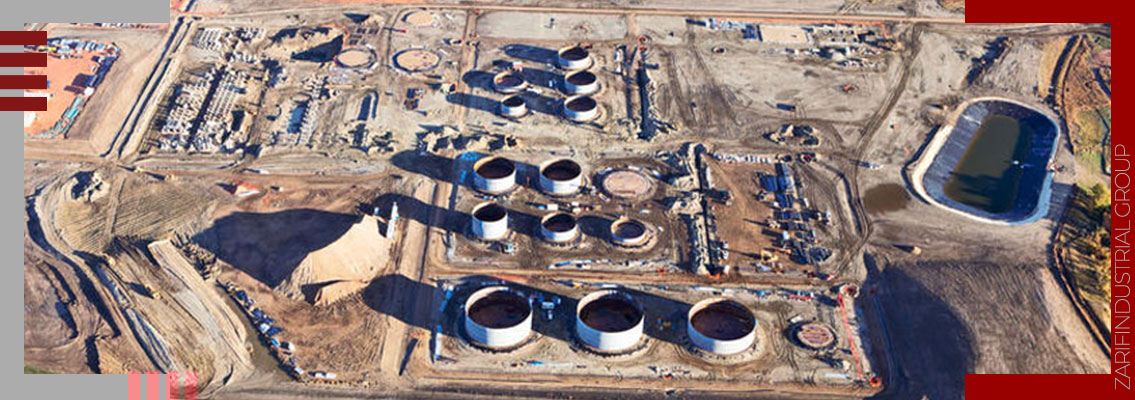
They maintain that due to these salts and the deposition of petroleum products over time, there are generally two types of destruction in these tanks:
- Destruction of the foundation of the reservoir floor: which causes the penetration of petroleum products into the soil bed and which has caused environmental consequences.
- Destruction of the outer wall of the tank: corrosion of the metal body of the sheets and their welding points.
In order to avoid environmental problems and fires, etc., the tanks are repaired periodically. In the traditional case, the tanks must be emptied and the defective parts removed and a new sheet replaced, which, in addition to its high cost, also reduces fire hazards. Is looking for.
With the advent of composites and the family of geomembranes, the insulation of these reservoirs and the risks and maintenance costs of these reservoirs have been dramatically reduced. Also, in order not to pollute the environment with these materials, due to the high resistance of geomembranes to chemicals, these sheets are used to keep the effluent and drilling mud in the bed insulation of the ponds. The applications of geomembranes in this industry are increasing.
More :why zarif-mosavar geomembranes
6. Water Transfer Channels
Although some researchers and geologists consider the construction of dams and water transfer as harmful to the environment, but in some cases due to drought in some areas and water losses, the water transmission network is used and in the construction of its infrastructure, damage to land is prevented.
Adjacent to the canal, the reduction of operation and maintenance costs and the minimum time and, most importantly, the lack of water wasted in this transmission are examined.
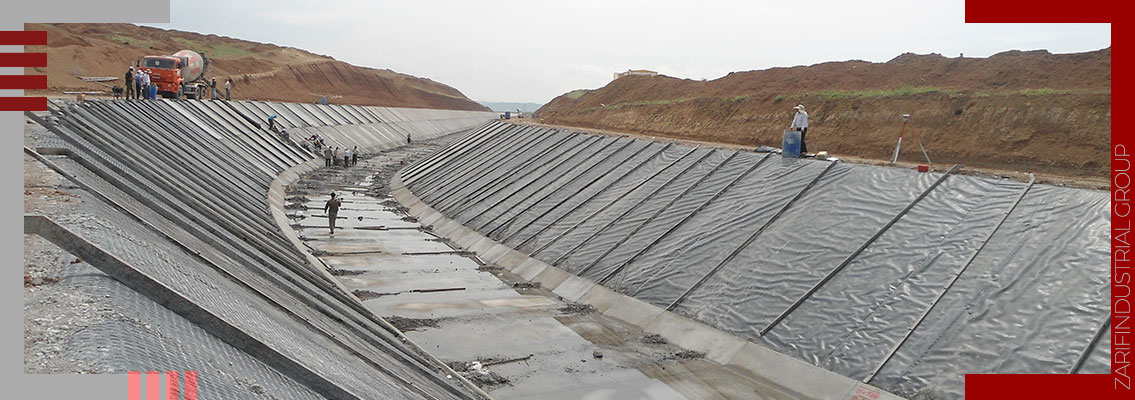
Traditional methods of constructing a water transfer canal using dense clay or concrete have always faced the issue of water loss and pollution of freshwater sources. On the other hand, when transferring saline water from places with freshwater aquifers, the impermeability of the water transfer canal is very important. This is where we find that geosynthetic materials, geomembranes and geotextiles are the best choice for concrete, bitumen and so on.
7. Construction of an artificial lake
Artificial lakes are mainly built for the purpose of creating recreational places, electricity generation, flood control, preventing water loss, increasing green space, agricultural development and overall economic growth of the region, which in Iran are several examples such as: Chitgar Tehran, Aras and Gonbad Kavous Golestan, Mashhad Park, etc.
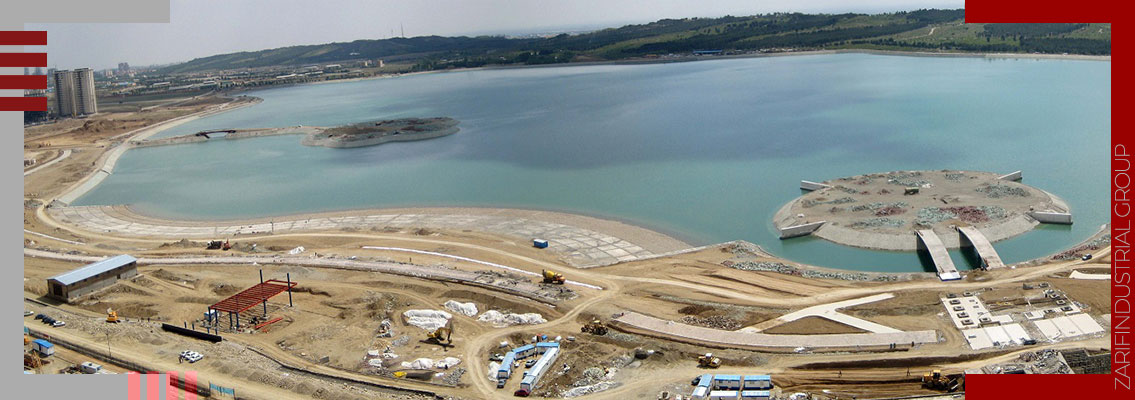
have been built to reinforce the bed and stabilize loose sand and soil and to reinforce the soil to prevent the bed from settling and finally cracking and leaking asphalt cover is needed to reinforce the bed, which is a large and costly project. Therefore, to prevent water wastage and to have a completely hygienic environment for aquatic life, the use of geomembranes is recommended.
The applications of geomembranes and the implementation of these lakes are similar to the construction of agricultural ponds, which you can read by
reading the article Why agricultural ponds with geomembranes?
8. Tunnel insulation
In road construction, tunnels are used to cross mountains, rivers and transport and access, water tunnels, underground spaces (metro stations, power plants, underground warehouses and mineral extraction workshops; TBM drilling is used. Sealing and insulating these tunnels from moisture are the sounds we are discussing, which are of different types as follows:
- Tunnel sealing with the help of liquid insulation
- Tunnel sealing with the help of panel insulation
- Tunnel sealing with the help of epoxy coating systems
- Tunnel sealing with the help of cement systems
- Tunnel sealing by injecting sealing foam
- Injection of sealing resin
- Tunnel sealing with the help of geomembrane and geocomposite system
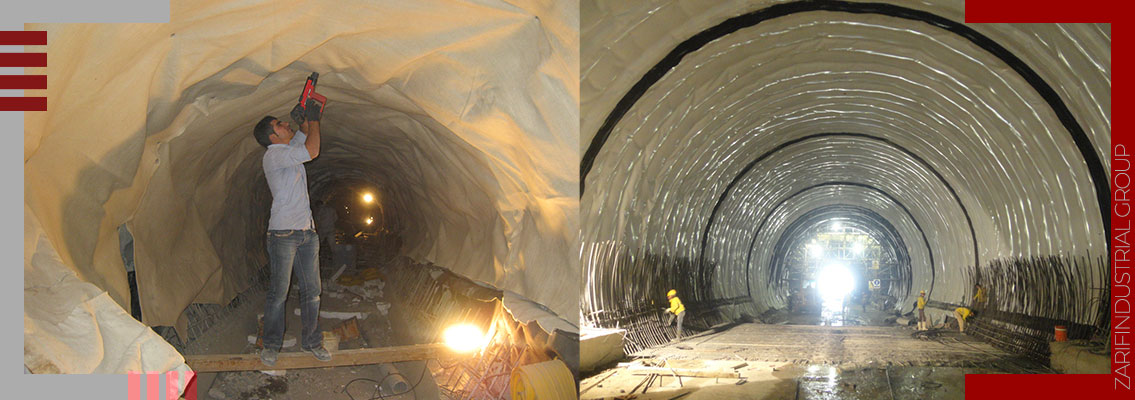
Each has its advantages and disadvantages, but again one of the best options is to use geomembranes and geocomposites.
9. Isolation of chemical wastewater tanks
Construction of sewage ponds or lagoons of urban and industrial wastewater treatment tanks is as follows:
- Aeration lagoon: This method uses mechanical aeration to accelerate biological activities and usually the depth of these lagoons is less than 5 meters.
- Anaerobic lagoon: By increasing the depth of the lagoons, because sunlight does not penetrate more than 1.5 meters and oxygen is not found, methane is produced in the underlying layers of fermentation and gas.
- Optional lagoon: A combination of aerobic and anaerobic lagoons that cause biological activity in the upper layer of oxygen and cause these activities in the lower layers of methane.
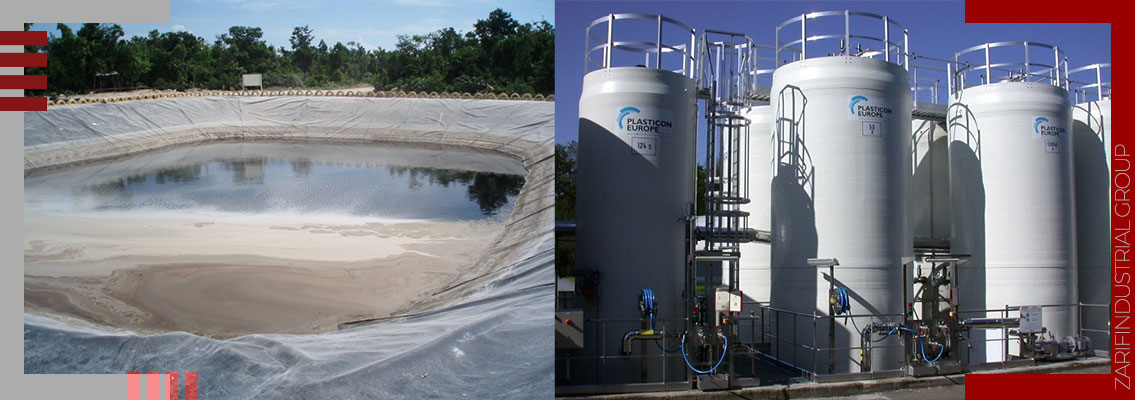
Because each of them has defects, they are usually used in combination and geomembrane sheets are used to make these reservoirs impermeable to soil and environment.

